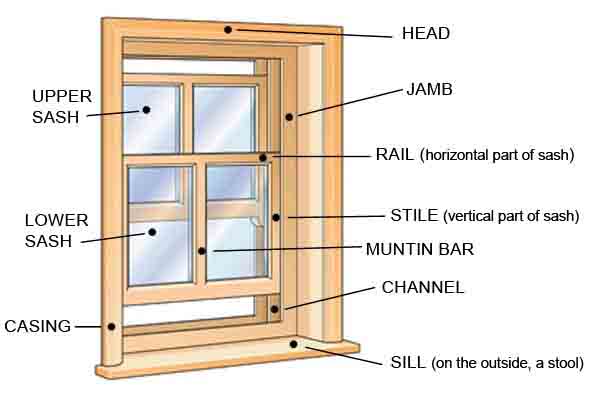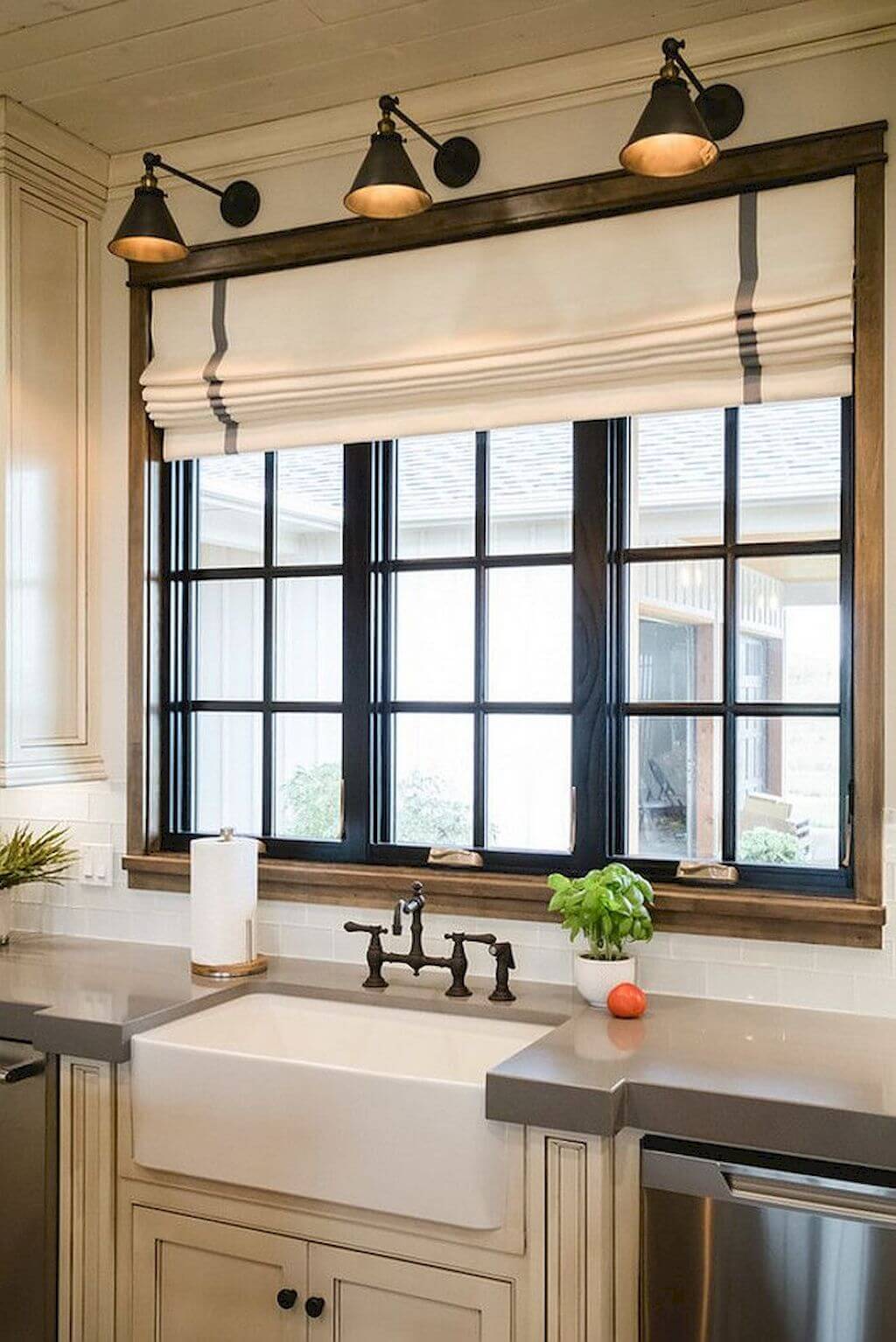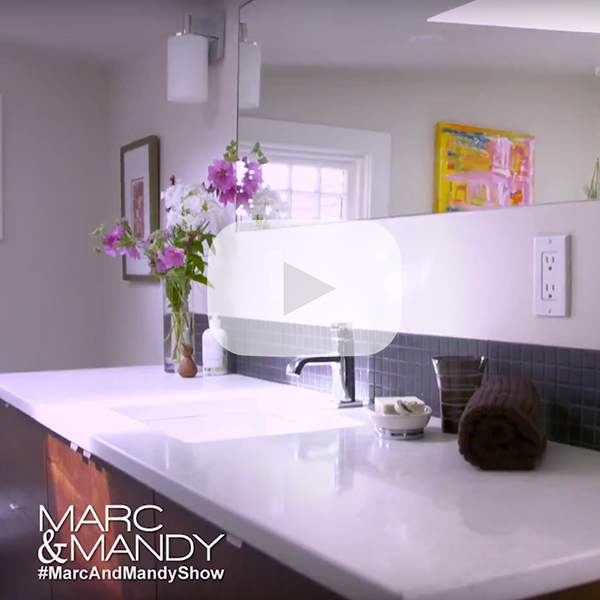Something we all have in our home are windows! They help to bring the outdoors in and to illuminate our spaces with the all-important natural light. But there are a lot of considerations when you are thinking of replacing your windows. To help make sense of them all, we interviewed Brayden Stephenson from North Shore Door on our All Things Renovation podcast.
Back in the 1700s and 1800s, the Brits and the Scots brought in a window tax as a way to tax the wealthy without the fight of having them declare just how much they had. It was felt that the more wealth you had, the more windows you could afford. It was easily calculated because anyone could count the number of windows from the street. Naturally, it was wildly unpopular, as all taxes are, as it was seen as a tax on light and air.

Basic Parts of a Window
Basic Frame Materials
There are four basic frame materials that are available, and then details within those.
Wood
One option is to have wood on both the inside and the outside of the window. In the past, the wood on the outside would have rotted but there are new treatments that mean that that’s less and less of an issue.
The second option is to have the frame on the outside cladded with aluminum or fiberglass to protect it from the elements. The inside can be a variety of species of natural wood that can be stained, painted, or clear coated.
Fiberglass
You can choose to have pultruded fiberglass on both the inside and outside of your windows. Pultrusion is a process in which the glass fibers are impregnated with a resin and then pulled through a heated stationary die. The heat causes the resin to undergo polymerization, providing the resistance to the elements that you want on an exterior window frame. The embedded glass fibers provide both strength and resistance to fire.
These frames often quite narrow and provide a modern and contemporary look. They are also available in quite large sizes.
Vinyl
This is the most common type of window frames in single family homes and low rise apartments. They are cost effective and relatively low maintenance. Most styles are available in this material.
Aluminum
Most houses that are retrofitted with windows are single pane, aluminum windows. It has a commercial, storefront look with sleek lines and narrow frames.
All of these windows are applicable to your home, so as to which one you choose, it will really depend on your budget and the look that you want.
Glazing and Filling
The term glazing refers to the glass that is within the window frame. The type of glazing is an important consideration for energy efficiency. Single pane windows are a thing of the past now. The technology has come a long way, and double and triple pane windows are now available.
There are various filling options for the space between the window panes. Argon gas and krypton gas provide additional heat efficiency.
Low-e Coating
A low-e coating on a window means that this window has low emissivity. It is highly efficient at keeping heat on the side of the window where it originated, while at the same time, letting visible light pass through. They help keep your house warm in the winter and cool in the summer. They are applied to the glass as soon as it has been formed.
There are 4 surfaces to a double paned window.
- First pane, outside of the house that you can touch
- First pane, inside the sealed area
- Second pane, inside the sealed area
- Second pane, inside of the house that you can touch
Low-e coatings are applied to the second surface, with optional application on the fourth surface. Applying low-e coatings to both surfaces increases the efficiency rating of the window to close to a triple pane window. This saves on the cost of the glass, as well as the energy consumption to make and transfer the glass. The weight of the window is also reduced.
Low-e coatings limit the UV rays from entering the home, which reduces Visual Transmittance, essentially protecting your furniture, floors and artwork from fading in the sun. One thing to consider, however, is that the more coatings are applied, the darker the tint becomes on the window. So if you have a beautiful view, you may not see it as brightly.
Opening Shapes and Styles
The shapes of windows are somewhat endless. However, there are some distinct families of window styles:
- Casements – cranks out
- Awnings – cranks up
- Sliders – slides sideways on a track
- Single Hung – slides up
- Double Hung – bottom slides up and top slides down
- Picture Windows – do not open
- European Style – tilt & turn
Mullions
Mullions were popular in windows for a very long time. They are the bars were two panes of glass meet. Originally they were used to create larger windows when there were limits on the sizes of the panes of glass that could be manufactured. Now you can have faux-mullions that are a design feature where the bars are sandwiched between two panes of glass.

Hardware Options
The type of hardware that is available depends on the type of window that you order, and selection is not as broad as the hardware for doors. For wood windows, the hardware comes in a variety of colours and is often a crank-style handle or a nesting handle. Fiberglass, vinyl, and aluminum windows tend to have hardware that matches the design element of the window, and often matches the colour of the inside frame.
How do costs compare between the styles?
Picture windows are the most cost-effective. They don’t open so there are no moving parts or hardware. Sliders and single-hung tend to just have rollers that slide along a track. Double-hung windows are a little more expensive as both sashes move, while casements and awnings are the most expensive option for windows, based on the amount of hardware involved. Most companies use stainless steel hardware, and there is more required to make the windows crank outwards.
Is there anything cutting-edge or of note coming up?
The industry is always evolving, and the designers try to keep up with design and trends. Locally here in the Lower Mainland, energy efficiency has become a greater and greater concern.
The black inside/black outside windows are very popular, especially with white farmhouse style homes. Typically when you paint sliding casement windows, the paint rubs off. Most companies are now moving towards a foil-wrapped or co-extruded vinyl product. Currently colour options are limited but it provides the desired longevity. Another innovation is clear glass that will turn frosted when a switch is flipped and electricity is applied.

Farmhouse Windows
To listen to the full episode and read the show notes, visit www.AllThingsRenovation.com or click on the Podcast tab at the top of our homepage at www.woodbeart.com.


